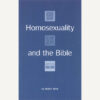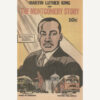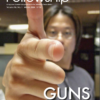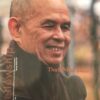What stood out to you about the Martin Luther King and the Montgomery Story comic book when you first encountered it?
The first thing that I couldn’t get over when I learned about the Fellowship of Reconciliation (FOR) comic book was that I had never seen it or heard about it before. For all my studying and teaching way beyond the textbook for years about the civil rights movement, I was chagrined that I didn’t already know about Martin Luther King and the Montgomery Story. Once I read it, though, besides marveling that FOR had published a comic book in 1957 to tell this story, what stood out to me most was how much of the story of Montgomery wasn’t in it.
How do you mean?
As a history teacher, I realized that, even though the comic was created by people at FOR who were close to the bus boycott and Dr. King provided input and editing as well, I had to treat it as a secondary source about those events. And then I could look to it as a primary source about the movement itself: how leaders, including the mostly white leadership of FOR, thought they could or should tell the Montgomery story in the context of 1957. This included Cold War-era fears as well as class and gender dynamics at the time that centered the work and contributions of mostly middle-class men. None of this meant the comic book wasn’t an incredible resource for teaching about the civil rights movement; it just meant we needed to give anyone using the curriculum and study guide lots of ways to explore the comic’s value as well as its limitations.
What is the process for developing a study guide and curriculum, and what were your main goals?
One of my main goals for the curriculum and study guide was to create materials that would deepen, complicate, and supplement the text itself. I knew we had to make sure to bring back in some of the people and organizations who had been left out. So I wanted to shine a light on the work and sacrifices of people like Claudette Colvin, Jo Ann Robinson and the Women’s Political Council, Georgia Gilmore and the Club from Nowhere — people without whom the boycott simply could not have gotten off the ground or lasted over a year.
All of us wanted to write back in the mentorship that former FOR staffer Bayard Rustin, a gay man and a Quaker whose outsized role in the movement was long overlooked because of his sexuality, provided to Dr. King on carrying out nonviolent strategy. And we also wanted to give proper credit to Rosa Parks’s serious expertise as an organizer and advocate, which shaped her decision to not give up her seat to a white man on December 1, 1955.
Another goal, just as important, was to highlight Martin Luther King and the Montgomery Story’s relevance for today. The comic provides a unique perspective on the events of the bus boycott, features a section where Dr. King narrates the work and teachings of Gandhi, and concludes with a pretty timeless primer on taking nonviolent action. I wanted to give teachers, students, and community groups opportunities to examine and consider all these parts of the comic — as well as its own history as a training and organizing tool that inspired no less an activist than the late Rep. John Lewis — with an eye toward how they can inform current struggles for justice, peace, and equality.
So there are classroom activities that aim to trace connections between the struggles remembered in the comic book and others from the past and the present, including the fight against apartheid in South Africa, the ongoing struggle for Palestinian liberation (including through the call for Boycott, Divestment, and Sanctions), the Black Lives Matter movement, and a series of mini “case studies” of movements and campaigns led by young people around the world.
For as long as violence, inequality, and racism have shaped this country, there have been people–that they may never have heard of–who challenged what seemed inevitable or unmovable.
Sarah DeBolt Badawi
Can you talk a little about how you go about creating a study guide like this?
The process of developing the guide started with figuring out how best to achieve these goals for all of the audiences we were trying to serve. For a K-12 audience, I had to think about what would capture students’ imagination, push their thinking, build academic skills, and give them a sense of possibility about their own capacity to be agents of change — all while making sense for curriculum at the middle school versus the high school level and being accessible and relevant for students both in the U.S. and in other countries.
For college-level students, adult learners, and/or community groups of different faith backgrounds, I knew I had to create bases for thoughtful discussion and analysis that would build on their own experiences of activist work and connect themes raised by the comic book to those that social movements contend with to this day.
To get there, we spent a lot of time hashing out ideas and questions I brought to my FOR colleagues, and then there was a lot of editing and rewriting and reworking of the background essays, classroom activities, guiding questions, and issues for discussion. We had help early on from generous advisors, academics, educators, and former colleagues. Finally, we were really fortunate to have reviewers who helped us refine and improve the work. Everyone from the former Executive Director of FOR, the Rev. Dr. Emma Jordan Simpson, to classroom teachers, to some very astute middle and high school students helped us to make the guide the resource it is.
What do you hope the broader public takes away from this resource?
I hope this guide will lead more people to the Martin Luther King and the Montgomery Story comic book, which can in turn, help them learn about FOR’s work over more than a hundred years. That matters right now because it’s really important for people to know more about the many, many examples in U.S. history of people and organizations like FOR (that they may never have heard of) that have undertaken innovative, courageous, and often unpopular work to promote peace and justice.
For as long as violence, inequality, and racism have shaped this country, there have been people (that they may never have heard of) who challenged what seemed inevitable or unmovable. We can still connect with and learn from this tradition of resistance.
The other thing I most hope this curriculum and study guide will offer the broader public is another resource that works to challenge what Julian Bond called the “master narrative” of the civil rights movement, because I think that has huge implications for contemporary struggles. When we look at social movements in all their messiness, fallibility, and complexity — especially when we highlight the importance of grassroots activists whose names most people may not know — we give ourselves and our students the chance to see that progress isn’t tidy or linear, and that we all have a part to play in creating a more just world.
This Q&A is an edited excerpt of an interview for Swarthmore College’s website.

